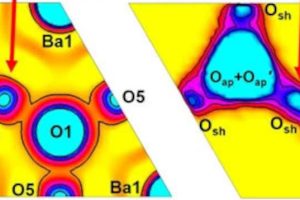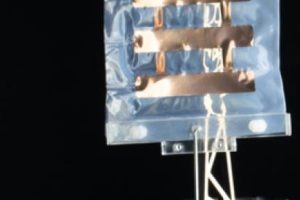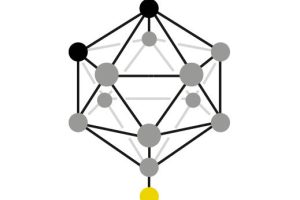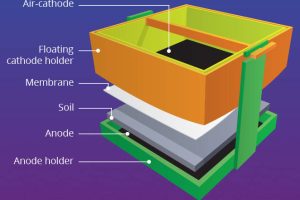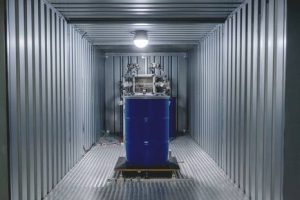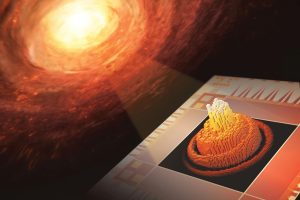5G services enhance safety and convenience in connected vehicles – but rely on a reliable connection. A project at the University of Warwick is dedicated to making sure cars and equipment are 5G-ready. The way cars are designed, made and used should significantly change with 5G connectivity. Critical properties include low latency, real-time determinism, the ability to handle large quantities ...
Research
The latest electronics research news from within the industry and universities from around the world.
Robot digger autonomously builds huge dry stone wall out of random rocks
ETH Zurich researchers have trained an autonomous excavator to construct a dry-stone wall 65m long and 6m high out of random rocks and building waste. Using sensors including cameras and lidar, it autonomously created a 3D map of the surrounding site as well as finding suitable building blocks and rocks for the wall’s construction. Scanning the stones allowed the robot ...
PROGRESSUS delivers 10-15x more EV charging stations per network connection
A three year EU project directed at energy conversion, intelligent electricity management and secure network monitoring called PROGRESSUS, has come up with a way which would make it possible to operate ten to fifteen times more electric car charging stations on a single network connection. The €20 million Electronic Components and Systems for European Leadership Joint Undertaking (ECSEL-JU) project was ...
TT Electronics opens power and control R&D Facility in Rochdale
The power and control business of TT Electronics had opened its research, development and manufacturing facility in Rochdale, near Manchester UK, to work on products for “mission-critical aerospace and defence technology”, it said. “TT’s recent acquisitions of the Power Supply business from Excelitas, Torotel and Ferranti Power and Control have enhanced our customer portfolio as well as significantly strengthening our ...
Better fuel cell ion conductor reveals new science
New ion conductivity science has been revealed during research into a better electrolyte for solid-oxide and proton ceramic fuel cells, according to Tokyo Institute of Technology (TItech). The material is actually a ‘dual-ion conductor’, which allows both protons and oxide ions to defuse, and can “realise high total conductivity at lower temperatures and improve the performance of electro-chemical devices”, according ...
Robotic soft actuators stay strong
A happy accident has revealed a way to stop electrostatic soft actuators from going limp. These actuators consists of a flat plastic bag of dielectric liquid with electrodes on opposite faces of the bag. If a high potential difference is placed between the two electrodes, they are attracted together, squishing the fluid out of the way. This action can be ...
Solid-state ‘thermal transistor’ controls heat flow with ±2.5V
UCLA researchers have made an electrically-controlled solid-state ‘transistor’ for thermal energy, with a heat-flow on-off ratio of >13:1 when controlled with a ±2.5V base bias at room temperature. The voltage-flow curve is almost a straight line, and operation at 1MHz has been demonstrated. “Precision control of how heat flows through materials has been a long-held but elusive dream for physicists ...
Bio-powered detector sounds the sewerage alarm
Researchers at Ritsumeikan University in Japan have made a simple sensor that can indicate when biodegradable waste from plant or animal sources is released into freshwater ecosystems. As well as the sensed contaminant, the organic mater is also the power source of this detector, which is essentially a novel floating fuel cell, with an LED on top. “The microbial fuel ...
Unpredictable GHz fields mooted for nuclear warhead monitoring
If countries A and B sign a treaty agreeing to put certain nuclear warheads into storage, how do they know the other is not cheating? German and US scientists think they might have the answer, using a technique much like the PUFs – physically uncloneable functions – used in add unpredictable unique identity numbers to ICs. “The technology combines cyber-physical ...
Superconducting single-photon camera has 400k pixels
Researchers at the US National Institute of Standards and Technology (NIST) have built a superconducting camera containing 400,000 pixels — 400 times more than any other device of its type. Superconducting cameras allow scientists to capture very weak light signals, whether from distant objects in space or parts of the human brain. Having more pixels could open up many new ...
 Electronics Weekly Electronics Design & Components Tech News
Electronics Weekly Electronics Design & Components Tech News




